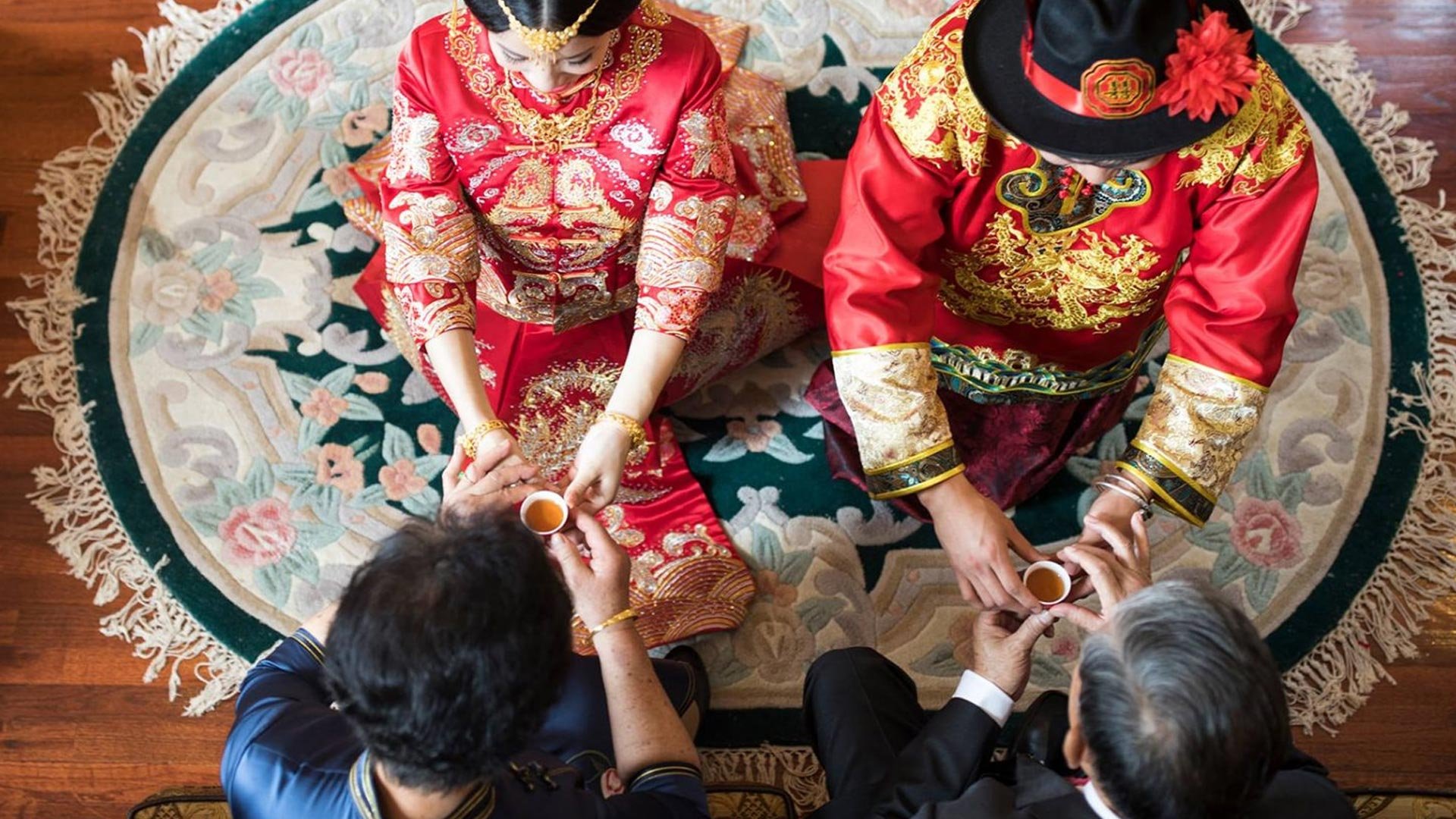
Chinese Tea Ceremony
The Chinese Wedding Tea Ceremony is a deeply symbolic and cherished tradition in Chinese culture. Here’s an overview of what it entails:
Purpose and Significance
Family Union: The ceremony symbolizes the union of two families and the couple’s respect and gratitude towards their parents and elders.
Acceptance: Serving tea to the elders signifies their acceptance of the new family member.
Preparation
Tea Sets: Festive red tea sets decorated with auspicious symbols like dragons, phoenixes, and the double happiness character are used.
Tea Selection: High-quality teas such as Long Jing, Bi Luo Chun, and Tie Guan Yin are chosen. Ingredients like red dates, longan, and lotus seeds are often added for their symbolic meanings.
Kneeling Pads: Red cushions are prepared for the couple to kneel on while serving tea.
Ceremony Steps
Introduction: The ceremony usually begins with the formal introduction of the bride and groom to their families.
Serving Tea: The couple kneels and serves tea to their parents, in-laws, and other elders. This act is often accompanied by bows or kneeling.
Receiving Blessings: In return, the elders offer blessings and gifts, often in the form of red envelopes containing money.
Symbolic Elements
Red Dates and Longan: These symbolize fertility and a sweet marriage.
Lotus Seeds: Represent wishes for many children.
Red Envelopes: Given by the elders as a token of good luck and prosperity.
Modern Adaptations
While the core elements remain, some modern weddings may adapt the ceremony to fit contemporary settings, sometimes incorporating it into the main wedding event.